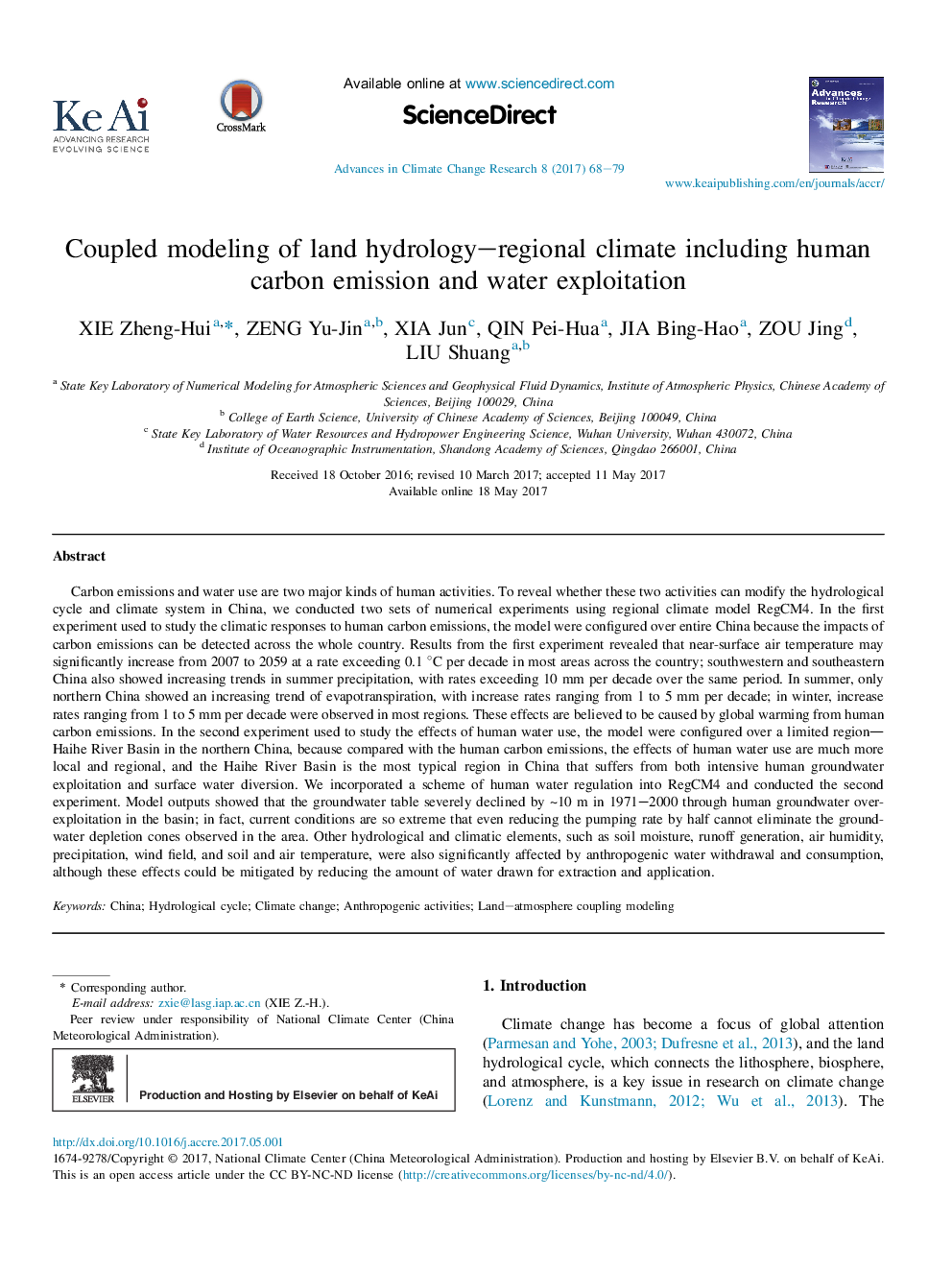| کد مقاله | کد نشریه | سال انتشار | مقاله انگلیسی | نسخه تمام متن |
|---|---|---|---|---|
| 5778996 | 1413750 | 2017 | 12 صفحه PDF | دانلود رایگان |
Carbon emissions and water use are two major kinds of human activities. To reveal whether these two activities can modify the hydrological cycle and climate system in China, we conducted two sets of numerical experiments using regional climate model RegCM4. In the first experiment used to study the climatic responses to human carbon emissions, the model were configured over entire China because the impacts of carbon emissions can be detected across the whole country. Results from the first experiment revealed that near-surface air temperature may significantly increase from 2007 to 2059 at a rate exceeding 0.1 °C per decade in most areas across the country; southwestern and southeastern China also showed increasing trends in summer precipitation, with rates exceeding 10 mm per decade over the same period. In summer, only northern China showed an increasing trend of evapotranspiration, with increase rates ranging from 1 to 5 mm per decade; in winter, increase rates ranging from 1 to 5 mm per decade were observed in most regions. These effects are believed to be caused by global warming from human carbon emissions. In the second experiment used to study the effects of human water use, the model were configured over a limited region-Haihe River Basin in the northern China, because compared with the human carbon emissions, the effects of human water use are much more local and regional, and the Haihe River Basin is the most typical region in China that suffers from both intensive human groundwater exploitation and surface water diversion. We incorporated a scheme of human water regulation into RegCM4 and conducted the second experiment. Model outputs showed that the groundwater table severely declined by â¼10 m in 1971-2000 through human groundwater over-exploitation in the basin; in fact, current conditions are so extreme that even reducing the pumping rate by half cannot eliminate the groundwater depletion cones observed in the area. Other hydrological and climatic elements, such as soil moisture, runoff generation, air humidity, precipitation, wind field, and soil and air temperature, were also significantly affected by anthropogenic water withdrawal and consumption, although these effects could be mitigated by reducing the amount of water drawn for extraction and application.
Journal: Advances in Climate Change Research - Volume 8, Issue 2, June 2017, Pages 68-79
